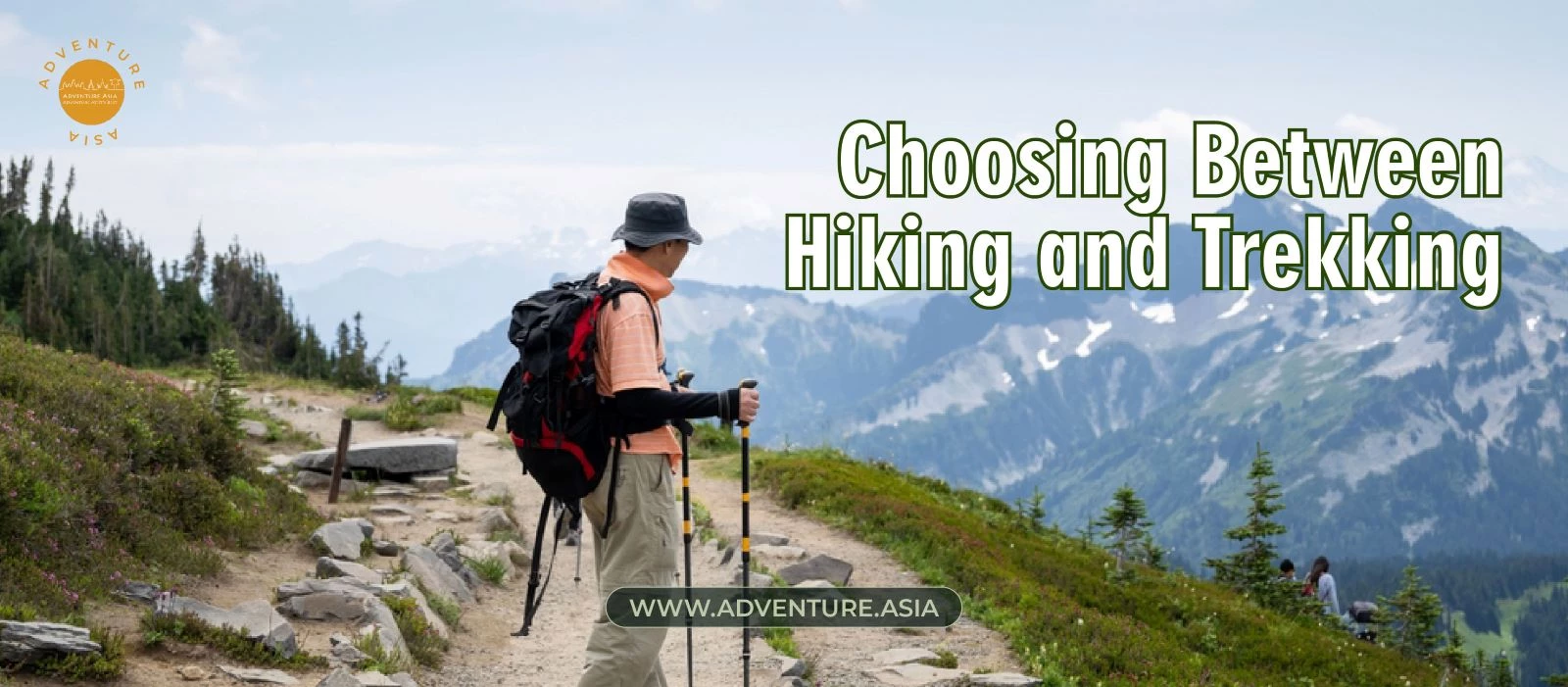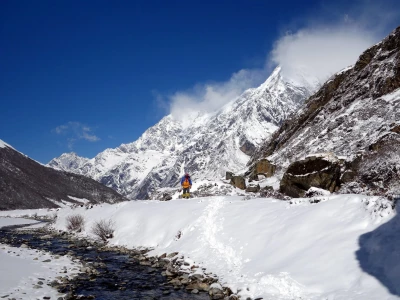
From Day Hike to Multi-Day Expedition: Choosing Between Hiking and Trekking
- 1. Understanding the Core Differences Between Trekking and Hiking
- 2. Choosing Your Adventure: Factors to Consider
- 3. Day Hiking: A Great Introduction
- 4. Multi-Day Trekking: Embark on an Expedition
- 5. Conclusion
Have you ever felt the call of the wild, a yearning to escape the everyday and immerse yourself in nature's beauty? Whether you're a seasoned adventurer or a curious newcomer, the world of outdoor exploration offers a plethora of exciting possibilities. But when it comes to planning your next adventure, you might encounter a question: should you embark on a day hike or a multi-day trek?
Don't worry, intrepid explorer! This guide will delve into the core differences between hiking and trekking, helping you choose the perfect adventure that aligns with your goals and experience level.
1. Understanding the Core Differences Between Trekking and Hiking
Let's clear up any confusion: hiking and trekking are both fantastic ways to connect with nature, but they offer distinct experiences. Here's a breakdown of the key differences:
Definition: Hiking refers to taking an extended walk on established trails, typically completed within a single day. Trekking, on the other hand, is a multi-day journey on foot, often venturing into more remote areas and requiring overnight camping.
Duration: This is the primary distinction. Day hikes generally last a few hours to a full day, allowing you to return to your starting point before nightfall. Treks, however, can span several days or even weeks, demanding careful planning and self-sufficiency.
Distance: Day hikes typically cover shorter distances, ranging from a few kilometers to an upper limit of around 20 kilometers. Treks, on the other hand, can stretch for much longer distances, depending on the route and terrain.
Remoteness: Day hikes are often found on well-maintained trails close to towns or park entrances. Treks, however, might venture into more isolated areas with limited access to amenities. This adds an element of adventure and self-reliance to the experience.
Terrain: While both involve walking on trails, treks might encounter more challenging terrain compared to day hikes. This could include steeper inclines, uneven surfaces, or even river crossings.
2. Choosing Your Adventure: Factors to Consider
Now that you understand the core differences, it's time to delve into the factors that will help you choose the right adventure:
Experience Level: Be honest with yourself about your physical fitness and outdoor experience. Day hikes are a fantastic option for beginners, allowing you to build stamina and confidence in a controlled environment. Multi-day treks, on the other hand, can be physically demanding and require strong navigation and camping skills. Don't be afraid to start with day hikes and gradually progress towards longer expeditions as you gain experience.
Time Commitment: Day hikes offer the flexibility of fitting into a busy schedule. You can choose a short morning hike or dedicate an entire day to exploring a more extensive trail. Treks, however, require a significant time investment. Be prepared to carve out several days from your calendar, potentially involving planning work or school absences.
Budget: Day hikes generally require minimal gear, making them a budget-friendly option. You'll likely need a comfortable backpack, water bottle, snacks, appropriate clothing, and sturdy hiking shoes. Treks, however, might necessitate specialized equipment like tents, sleeping bags, cooking gear, and navigation tools. Additionally, some treks might require permits or involve guide fees, adding to the overall cost.
Goals and Preferences: What do you hope to gain from your outdoor adventure? Day hikes offer stunning scenery, a chance to exercise, and a refreshing escape from daily routines. Treks, on the other hand, provide a deeper sense of accomplishment and immersion in nature. They can push you physically and mentally, fostering self-reliance and a profound connection with the wilderness. Consider what kind of experience you're seeking – a quick escape or a transformative journey.
Travel Logistics: Day hikes are often readily accessible from populated areas. You might be able to find numerous trails within a short drive from your home or vacation destination. Treks, however, often require travel to remote locations, potentially involving flights, long car journeys, or public transportation.
3. Day Hiking: A Great Introduction
Day hiking is a fantastic way to dip your toes into the world of outdoor exploration. The beauty of day hikes lies in their simplicity and accessibility. You can choose a trail that suits your fitness level, whether it's a gentle stroll through a scenic forest or a more challenging climb with breathtaking views.

The essential gear needed for a day hike is minimal. Pack a comfortable backpack with enough water to stay hydrated throughout your journey. Bring along nutritious snacks to keep your energy levels up, and don't forget comfortable hiking shoes and clothes that provide sun protection and allow for breathability.
Read on: Differences Between Trekking And Hiking? Which One is Right for You?
4. Multi-Day Trekking: Embark on an Expedition
Multi-day trekking offers a unique opportunity to truly immerse yourself in the wilderness. It's an adventure for the soul, testing your physical and mental limits while rewarding you with breathtaking landscapes, a sense of accomplishment, and a deep connection with nature.
However, treks require careful planning and preparation compared to day hikes. Here are some additional considerations:
Navigation Skills: Knowing how to navigate with a map and compass is crucial for treks, especially in remote areas. Consider investing in a GPS device as a backup and familiarize yourself with basic navigation techniques before setting off.
Camping Gear: You'll need a tent or other form of shelter for overnight stays. Choose a backpack that can comfortably carry your camping gear along with your supplies for the duration of the trek.
Food Planning: Packing enough nutritious and lightweight food for the entire trek is essential. Dehydrated meals and high-energy snacks are popular choices for trekkers. Remember to factor in proper food storage and waste disposal practices to minimize your impact on the environment.
Safety Precautions: Be aware of potential hazards like wildlife encounters, weather changes, and altitude sickness. Pack a first-aid kit, learn basic survival skills, and let someone know your planned route and estimated return time.
Discover more: Top 9 Trekking Adventures in Vietnam for the Intrepid Explorer
5. Conclusion
The world of outdoor exploration awaits! Are you an experienced adventurer seeking unique hiking and trekking expeditions that go beyond the typical tourist trail? Adventure Asia curates exciting soft/medium adventure vacations designed for experienced explorers. Contact us today to craft your dream trek and push your boundaries in the beauty of nature!





















